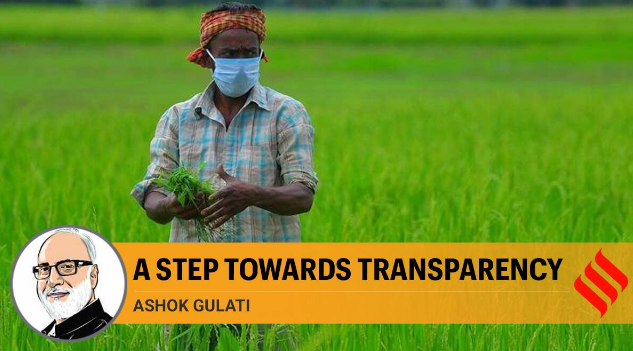Typical, the expenditure on agri-R&D desires to be doubled or even tripled in subsequent three years, if boom in agriculture has to provide food security at a national stage and subsidies on food and fertilisers want to be contained.
Finance Minister Nirmala Sitharaman needs to be complimented for bringing approximately transparency inside the Union price range, at the least inside the component on the agri-food quarter. yr after yr, a widespread part of the meals subsidy turned into being put underneath the carpet by increasing the food employer of India’s (FCI) borrowings — those had crossed Rs three lakh crore. no person believed that the budgeted discern of Rs 1,15,570 crore in the 2020-21 financial yr meditated the genuine photograph of this subsidy. The FM has revised this determine to Rs 4,22,618 crore, a whopping growth of Rs three,07,048 crore. The revised estimate (RE) for FY 2020-21 is three.sixty six instances the budgeted determine, indicating that the majority borrowings of FCI have been cleared. that is indeed a historic step in the direction of introducing transparency in the Union price range. And for FY 2021-22, the budgeted estimate is Rs 2,forty two,836 crore. Hindi News

The minister additionally needs to be complimented for clearing off the fertiliser industry’s arrears. against the budgeted figure of Rs seventy one,309 crore for FY 2020-21, the revised estimate is Rs 1,33,947 crore, an growth of Rs sixty two,638 crore. For FY 2021-22, things are likely to smoothen with a budget provision of Rs 79,530 crore.
The third maximum expenditure in the agri-food area is that of the Pradhan Mantri Kisan Samman Nidhi (PM-Kisan), which decreased from Rs seventy five,000 crore in FY 2020-21 to a RE of Rs sixty five,000 crore; the identical amount is now budgeted for FY 2021-22.
The Pradhan Mantri Fasal Bima Yojana is budgeted at Rs sixteen,000 crore for FY 2021-22, no longer lots exclusive from the RE of FY 2020-21 (Rs 15,306 crore). The hobby subsidy on short-time period credit score to farmers in FY 2021-22, Rs 19,468 crore, too will no longer be very special from the RE of FY 2020-21, Rs 19,832 crore.
From a coverage angle in the agri-food space, past the transparency in numbers, one need to point to the massive bias closer to subsidies — food and fertiliser, PM-Kisan, crop insurance and hobby subvention — compared to investments, mainly studies and development. The allocation for agri-R&D is a meagre Rs eight,514 crore in FY 2021-22 against a RE of Rs 7,762 crore in FY 2020-21. that is bewildering because the marginal returns in terms of agri-boom from expenses on agri-R&D are almost five to ten instances better than through subsidies. India spends not even 1/2 of what a private global company like Bayer spends on agri-R&D — nearly Rs 20,000 crore each 12 months. No marvel our boom momentum in agriculture remains subdued and India continues spending on freebies with sub-best results.
primary policy factors need to be debated. One with admire to food subsidy, the FCI’s financial price of rice is Rs 37/kg and of wheat about Rs 27/kg. This monetary cost is roughly 40 per cent higher than the procurement charge. Why not provide the general public distribution gadget’s beneficiaries the choice of direct coins transfers to the music of procurement fee plus 25 per cent? this can create a greater assorted demand which, in flip, will assist diversification in agriculture. further, in food subsidy, it's time to revise the problem expenses for beneficiaries. even as the “antyodaya” (maximum marginal) class can preserve receiving grains at Rs 2 or Rs three/kg, all others need to pay at the least half of the procurement charge if meals subsidy must be added to plausible degrees. in addition, one ought to debate whether or not 60 or sixty seven consistent with cent of the population have to be included by using the meals subsidy or this parent have to be brought all the way down to forty in keeping with cent.
, within the case of the fertiliser subsidy again, large subsidisation of urea, to the tune of almost 70 in keeping with cent of its cost, is main to its sub-superior utilization. it is time to move toward direct cash transfers to farmers based totally on a in step with hectare basis and free up charges of fertilisers. this will help lessen leakages and imbalance in NPK (nitrogen, phosphorus, potassium) utilization and lead to performance, fairness and environmental sustainability.
ordinary, the expenditure on agri-R&D needs to be doubled or even tripled in next three years, if growth in agriculture has to offer meals safety at a countrywide stage and subsidies on meals and fertilisers want to be contained. Can our policymakers do it? most effective time will tell. Hindi News
 Dies ist eine mit page4 erstellte kostenlose Webseite. Gestalte deine Eigene auf www.page4.com
Dies ist eine mit page4 erstellte kostenlose Webseite. Gestalte deine Eigene auf www.page4.com